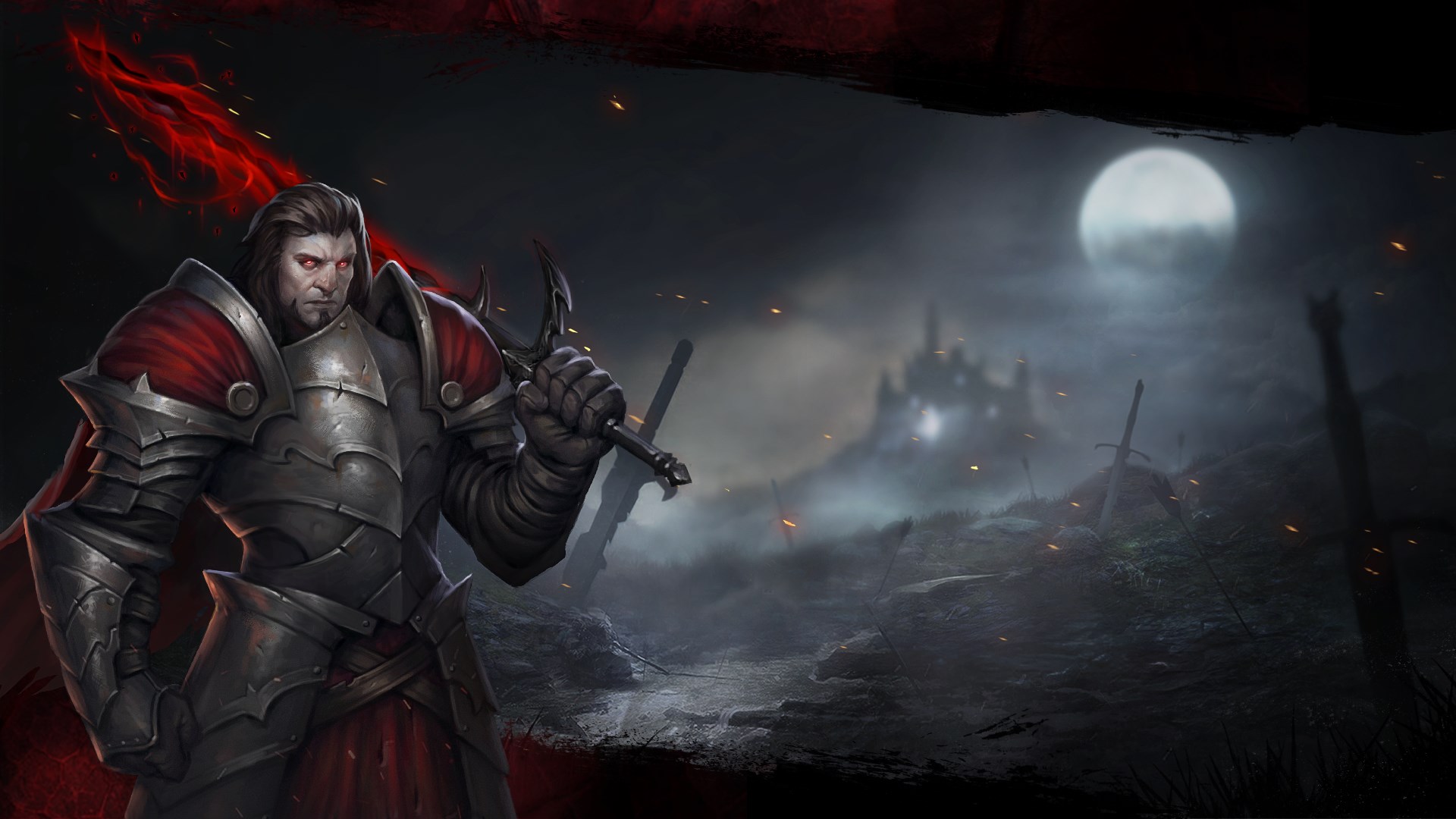Spacebase Startopia Review (Xbox One) – Even Utopia Needs Administrators
Welcome all meat sacks and organic cell clusters to another Finger Guns review by yours truly, a lowly cadet just trying to manage my Spacebase Startopia, and make it a habitable, friendly place, free of garbage for all aliens to live, laugh and love. I get no credit for my hard work, just sarcasm and derision from the station’s AI.
The original Startopia was a bit of a cult classic in the field of management games. Back in 2001, the same year that Halo first showed us what a ring world/station could look like, Startopia let us repurpose and administer a derelict one, making it into the entertainment hub of the galaxy.
20 years later and Realmforge Studios have created Spacebase Startopia, a remake of a game I thought long forgotten, and about as faithful to its source material as it’s possible to be. Startopia gives you control of everything you could think of on your station. From docks and trade, through food production, waste management (with a big emphasis on recycling), entertainment, farming, power generation, transport and security, Startopia invites you to manage a space station however you see fit. You have access to three decks that go right round in a giant ring, one for business and keeping everything running, one for entertainment, and the third, the biodeck, a beautiful green space for farming everything you need. Yes, it is Sims and Simcity in space, but it’s also nothing like them.
So is it simply a sheen of paint on a 20-year-old game, or is it a remake in the fullest sense built for modern systems? Does it have the same problems the original had? Let’s cycle the airlock, and take a look inside.
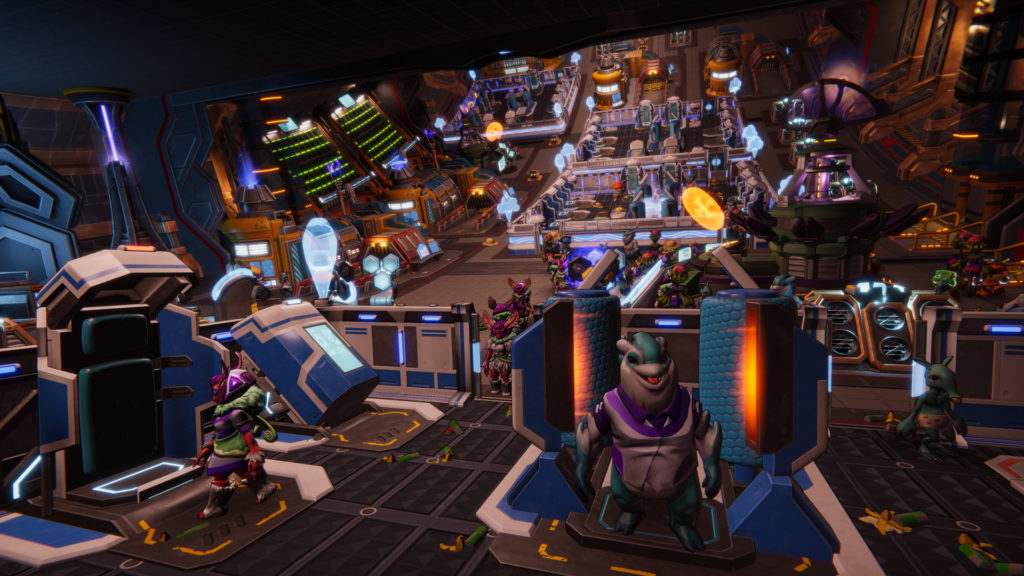
There is a premise and scenario behind Spacebase Startopia, but it can be boiled down to creating space stations to promote cultural exchange and understanding. The longer version involves constant war between different alien species, who without a universal translator were just slinging insults at each other. Once that was invented, the different species were able to find common ground and set up the Spacebase Startopia project. You are a commander recruit who, with the help of the AI Val, will run one of these spacebases, and try not to run it into the ground.
The Campaign mode comes with 10 scenario missions, each with its own set of completion requirements you must meet i.e. create a certain amount of a particular item, heal a said number of aliens, or harvest a number of resources. There is a premise to each one, kind of like a strange Spaceballs version of a Star Trek episode scenario, but witty setups aside, it boils down to aliens on this world need your help, they come aboard, you help them.
Val, her voiceover, and the mission premise setups have a goofy humour to them that rarely lands as well as it hopes to. She has entirely too much to say, a little of it funny, some of it really not. The best moments are probably when she just cannot possibly give you praise, and when you achieve a mission requirement she instead berates you over how long you took, or logs the test in the folder of shame, her personnel file for you. Those moments had me laughing – I just wanted to get one piece of genuine praise from her – don’t count on that by the way, she never relents.
Apart from these test scenarios, there is no other real story to Startopia. There is no real campaign beyond tests that familiarise you with the systems. Do not expect Command and Conquer, or a slowly intensifying war like Age of Empires. This is The Sims in Space. The story is really what you make it.
Speaking of what you make it, Free Mode is where it’s at, far more so than the Campaign. Same as in any game like Sims, or Simcity, just starting with a fresh, blank canvas, empty space station is the best way to go. You can build at your own pace, see to your alien’s needs in whichever way you like. Some of the most engrossing stuff comes from that peaceful managerial role on your station. Managing alien satisfaction levels and monitoring litter and recycling was far more my scene than worrying about completing certain parameters.
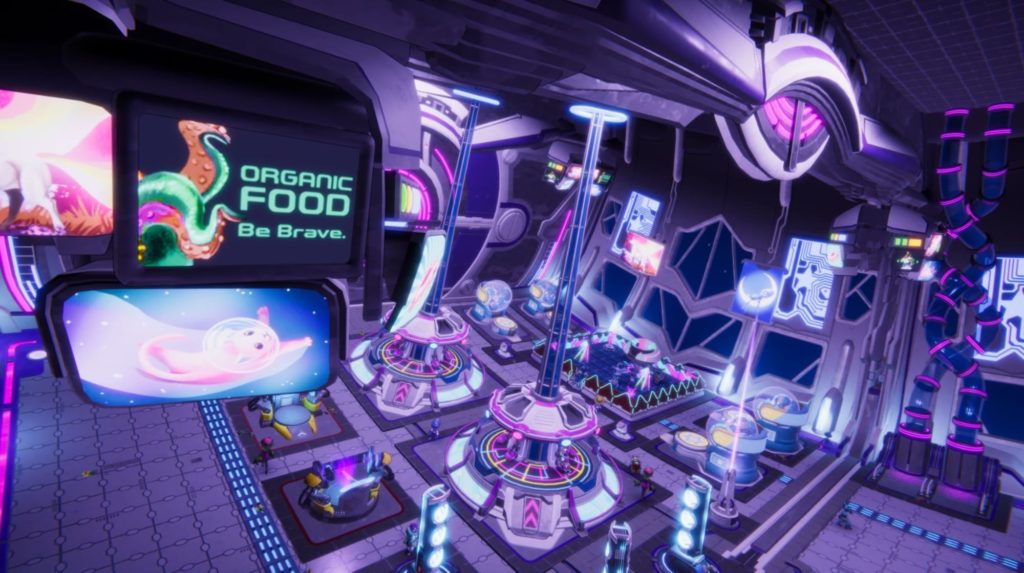
So how does it all work? Well, there are a lot of layers to Startopia, not least of which the three different types of decks. The sub deck, the fun deck, and the bio deck. Turn on a free mode or campaign scenario and the airlocks open. Literally the moment you gain control of the station, little aliens of nine different species start arriving. They are your customers and they have needs.
Think of the first two decks as Mazlow’s hierarchy of needs. On the sub-deck you need to build rooms for your space station that cater to what the aliens need to survive. For starters, that’s a berth, where they can spend money to eat and drink. Then you can expand. Maybe build a hospital because you don’t want an epidemic of disease on your station. You have fuzzies to help you, little droids that can build whatever you have the energy for.
The alien consumers and tourists will start throwing rubbish on the ground immediately, so next should be bins and atmosphere filters to keep everyone healthy, and the vermin levels down. Recycling centres are a must at an early stage, communication centres bring in useful perks and information.
Most of the key function rooms also need staff to run them, so you have another menu that monitors each and every alien that enters the airlock. And there can be hundreds of them. Once you’ve given some of them jobs, you’ll see them attending to their roles, then in between shifts going off to get food and dropping litter etc.
As you progress, the scope of the game becomes evident. Build a factory, and you can create plastics and circuit boards, cleanse nuclear waste and make sushi, but there’s nothing to do with any of it. Only when you build almost the last room in the sub-deck, a spaceport, do you have traders able to dock at your station. Suddenly another massive system opens up allowing you to trade all these high-quality items for energy, and giving you the kind of resources you need to push towards the end game. There is a lot to do and monitor and just setting up and managing your own station is a worthy mode all on its own.
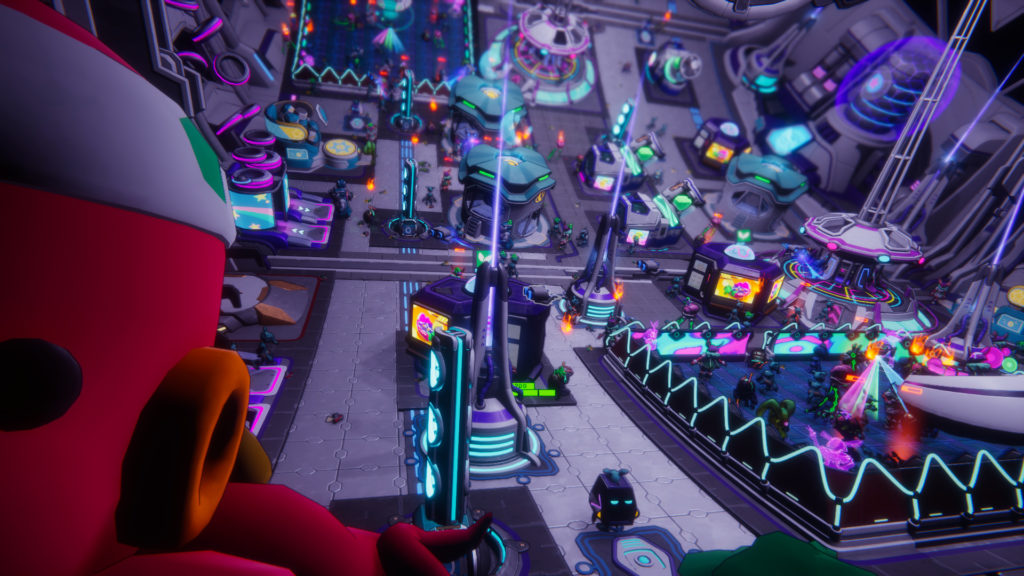
Next up is the fun deck where the rooms you build are for entertainment purposes; everything from discos to arcades, rides to loot-box machines, hotels to cat cafes. The deck requires an energy distribution mechanic the lower deck doesn’t, but once you’ve powered the rooms, the alien’s needs are being met everywhere.
Finally comes the bio deck. This is a section where you can terraform and shape a garden on your station for recreation, zen spirituality, and farming on nine different terrain types. You can raise and lower land, create lakes and peaks. Hire the farming species of aliens and they will plant crops everywhere, which you can harvest to create items in the factory and fuel your station’s trade ambitions.
Satisfied aliens mean Prestige points, which acts as a currency allowing you to unlock more and better rooms and items. You also need energy, generated through the aliens using your station, recycling litter, and spending on the fun deck.
The little alien creatures are all wonderful, and it’s fun to just get a bit lost in it. Once you’ve set your station up and you’ve opened a few bulkheads, satisfied everyone’s immediate needs, it’s fun to just pick an alien and find out about them. Set the camera to follow them as they go to work, get the munchies and find some food at the berth, and then trundle up to the fun deck to get their boogie on at the disco. They end their day contemplating their wonderful new station on the bio deck. This is the best way to experience Startopia, from the point of view of your guests.
Overall it’s very complicated, and takes some learning. Everything you need is there, but it’s often a bit tricky to work out what needs to be done to achieve what you want. What do you need to research, who do you need to hire, what controls give you the information you want? Research was not clearly defined and the use of crates to further research is pretty unintuitive. The PC controls look quite good, but on Xbox One it’ll take a few hours before you are confidently clicking shoulder buttons to bring up all the different monitoring menus you need. It says the tutorials are in place mainly for insurance purposes, but don’t start the campaign without doing them – you won’t have a clue what to do, and the AI rarely helps you at all. She just insults you.
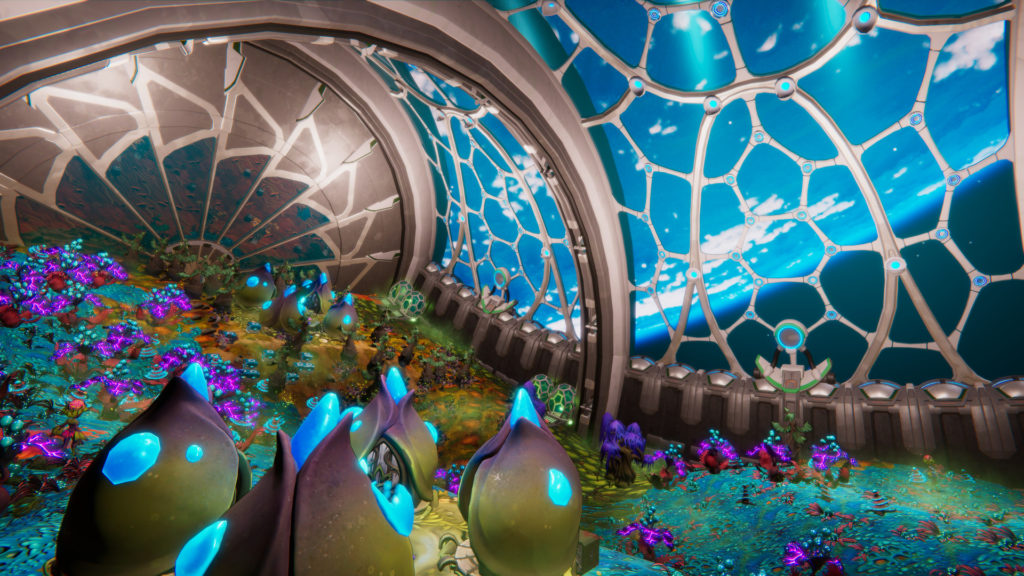
Graphically of course Spacebase Startopia is a massive step up from the original in 2001. The decks and all the rooms look vibrant and enticing, and when your station is heaving with aliens, it can look amazing. Alien models look great from on high, watching the hustle and bustle of your station. However they look pretty simple when you zoom your camera in close. Close-up there are some foggy textures, pop-in and blur, colours running into each other. It’s not really meant to be viewed this way, and with the sheer amount of stuff going on it’s no wonder concessions had to be made somewhere.
Spacebase Startopia sounds like a bustling space station. As your camera moves and pans around the ring, each room will be audible as you hover over it. You can hear the chatter of the aliens, the beeps and boops of your fuzzy droids. Move through the fun deck and you can feel the disco music, the musak playing in the cat café, the swoosh as tubes traverse decks bringing more customers. The sound design is good, the themes are pretty catchy, and it all just melds together to really give that feel of a living space station.
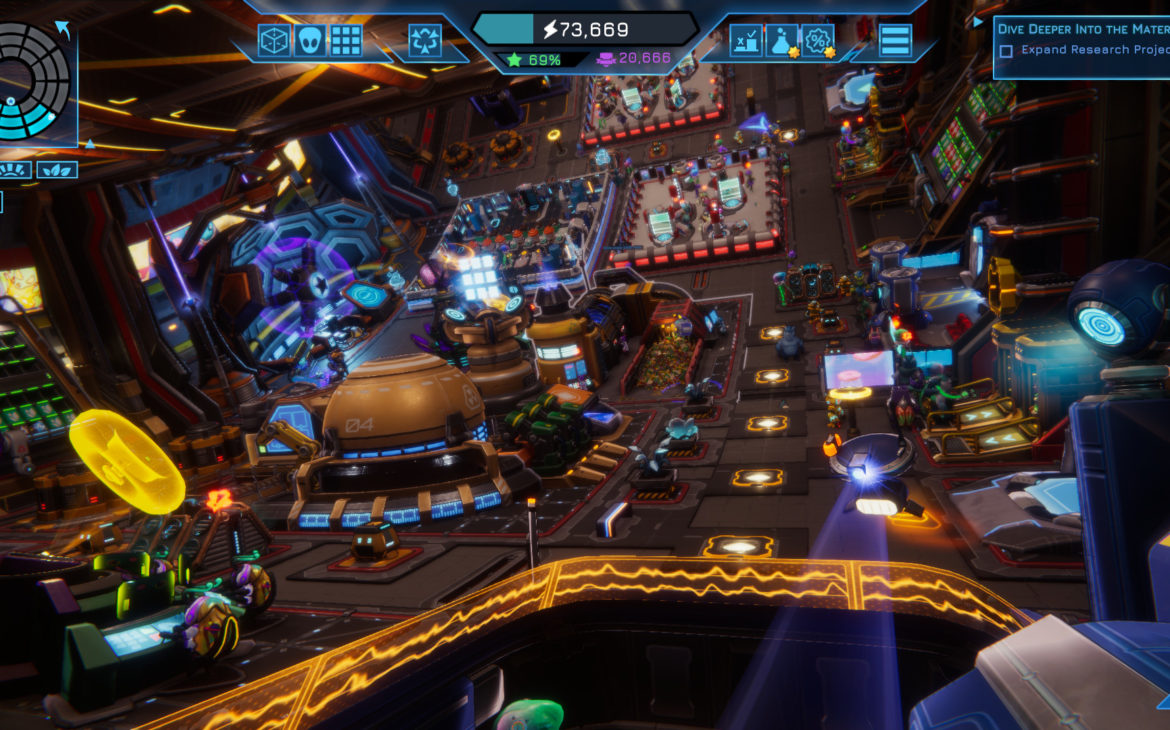
Sometimes things go wrong in space. Spacebase Startopia suffers from a few issues chiefly among them its infested with bugs. I don’t mean the vermin that roam your station if you don’t keep on top of the garbage issue. I mean game-crashing bugs.
Save your station often, because after a certain level of complexity, the game starts to experience massive slowdown issues and often crashes. Its funny that it seems to have the same basic glitches that the original had way back in 2001. Was the original source code used and expanded upon?
Players will experience major framerate drops quite frequently, stuttering and paused gameplay, especially when things get gummed up on your station. For example, massive queues for food or amenities, at the deck tubes, or garbage and vermin problems, increase the strain on your station. There is so much information and so many aliens, each with all their corresponding branching behaviour, ratings, stats, moods and needs, it feels like the sheer number of computations is beyond the code of the game. Playing it on Xbox One, I did wonder if the Series X or PS5 would have managed a lot better. As my examples also might hint at, you can go someway towards avoiding the frequency of issues by managing your station better – more trash robots, more tubes, more berths, all these things increase the number of aliens, but decrease some of the burden on your generation-old processor.
The last issue I’d mention is combat. This is a game that barely needed any kind of combat mechanic, and the one we get feels shoehorned into a game that doesn’t need it. Usually, all that happens is a few space-pirates coming aboard and shooting stuff. They have no hope of really causing an issue, but they cause panic. Panic slows your station to a crawl. Trying to deal with it involves security bots and mechs, but it’s very tricky to build extra units and involves complex research options, and the interface used to command them is janky and unfit for the purpose. I’m having trouble remembering if the original featured much combat, but in this state it should probably have been cut from this release.
There is also a multiplayer mode, where you can send units to destroy your competition, and research sabotage options, but the way the game mostly works just makes multiplayer seem wrong in this context. If its all about satisfying your customers, then why have combat? If you are all on the same station, working for the same company, why are you fighting? My gripes aside, the slowdown and abundant crashing issues made multiplayer nigh on impossible to use.
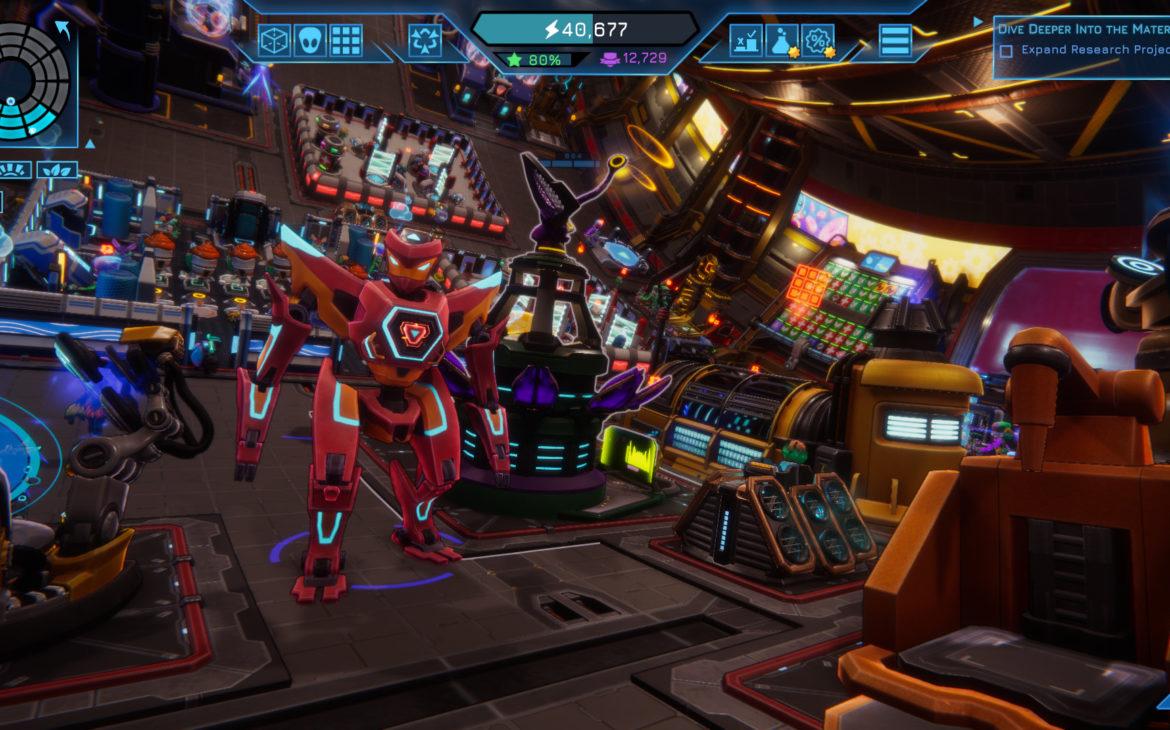
Spacebase Startopia is still fun and its still unique, even 20 years on. It’s a wonderfully ecologically minded utopia, where the problems you face, instead of guns, conflict and violence, are mostly too much garbage, dissatisfied and demanding customers, and the intricacies of trade and research. It’s not about conflict, and the lacklustre combat options and controls reinforce that – it’s about making a living in your own space station. Creating harmony, satisfying customers, and diffusing issues. It should appeal to you if you are the type of gamer who can be bored by simply shooting people and the ludo-narrative dissonance that entails.
I wanted to be able to give this game a higher rating. It’s ambitious, full of complexity and options, and genuinely engaging gameplay that rarely involves any combat. But on Xbox One at least, it’s almost impossible to get beyond the halfway point of a space station, because that same complexity begins to take its toll on the hardware. After a certain point, when you’ve opened up several bulkheads, and got more than halfway through the research list, the game slows to a crawl, starts experiencing framerate drops and major stutter, before crashing. On Xbox One I could not make it past that point. I was unable to test some of later systems because the game would crash repeatedly.
I instead wished I had a PC capable of running it in the first place, because these issues may not exist on PC. Possibly on PS5 and Xbox Series X with a solid-state drive, the processor demand may be as nothing and all these issues suddenly forgotten, letting you open up the entire ring, and create that bustling hive of activity I was denied. It’s possible, but make sure before you buy that the system you are using can run this properly.
A unique and complex gem, Spacebase Startopia is an engaging and constantly interesting take on the management genre. The Sims in space is selling it very short, because it is much much more. On console however, it’s intricacy and scope are its undoing, causing severe slowdown, frame-rate issues and regular crashes. Its campaign is a fun set of tests, but free mode (just running your station without parameters) is easy to get completely engrossed in.

Spacebase Startopia releases on March 26th 2021 on Xbox One (review platform), Xbox Series, PS5, PS4, PC via Steam and at some point in the future, Nintendo Switch.
Developer: Realmforge
Publisher: Kalypso Media
Disclaimer: In order to complete this review, we were provided with a promotional copy of the game. For our full review policy, please go here.
If you enjoyed this article or any more of our content, please consider our Patreon.
Make sure to follow Finger Guns on our social channels –Twitter, Facebook, Twitch, Spotify or Apple Podcasts – to keep up to date on our news, reviews and features.

